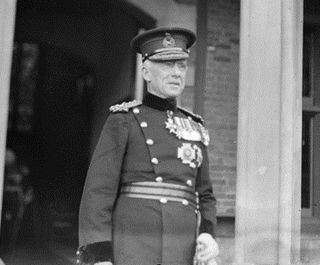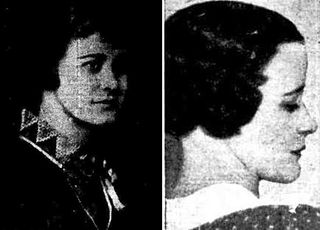Related Research Articles

Lieutenant General Sir Joseph John Talbot Hobbs, was an Australian architect and First World War general.

York is the oldest inland town in Western Australia, situated on the Avon River, 97 kilometres (60 mi) east of Perth in the Wheatbelt, on Ballardong Nyoongar land, and is the seat of the Shire of York.

John James Clark, an Australian architect, was born in Liverpool, England. Clark's 30 years in public service, in combination with 33 in private practice, produced some of Australia's most notable public buildings, as well as at least one prominent building in New Zealand.
Australian non-residential architectural styles are a set of Australian architectural styles that apply to buildings used for purposes other than residence and have been around only since the first colonial government buildings of early European settlement of Australia in 1788.

George Thomas Temple-Poole was a British architect and public servant, primarily known for his work in Western Australia from 1885.
The Public Works Department (PWD) was the State Government Agency of Western Australia, which was charged with providing and maintaining public infrastructure such as dams, water supplies, schools, hospitals, harbours and other public buildings. The Department is no longer operational, having its responsibilities reassigned to other State Government Departments and corporate entities since 1985.

The Fremantle Markets is a public market located on the corner of South Terrace and Henderson Street, Fremantle, Western Australia.
Harold Boas was a town planner and architect in Western Australia. Boas designed many public buildings in and around Perth and was an influential Jewish community leader.

The Deanery is located on St Georges Terrace, at the intersection of St Georges Terrace and Pier Street Perth, Western Australia.
Albany Cottage Hospital is the heritage site of a former hospital in Albany, Western Australia. The site is also named the Vancouver Arts Centre Group for its later use as a community arts centre.

Albany Post Office is a heritage site of the former post office in Albany, Western Australia. The site was also a Customs office, a base station of the overland telegraph, and is noted for its architectural and historical significance. It was listed by the Register of the National Estate in 1992.
John Bramston Russell Oldham (1907–1999) at Subiaco, Western Australia) was a landscape architect in Western Australia. Oldham, a pioneer of landscape architecture in Australia, and his journalist wife Ray were founding members of the National Trust (WA) and were prominent in the fight to save some of WA’s heritage buildings during the 1960s and 1970s.
Between 1891 and 1985 the Principal Architect of the Public Works Department was responsible for the delivery of the State Government’s public buildings capital works program throughout Western Australia.

William Burden Hardwick, often referred to professionally as W.B. Hardwick, was an Australian architect who from 1917 until 1927 was Principal Architect of the Public Works Department in Western Australia. The Encyclopedia of Australian Architecture refers to Hardwick as being "well known for continuing the high standards of design in public buildings established during the gold boom, particularly in hospitals, schools and post offices throughout the state".
Hillson Beasley was an English-trained architect who relocated to Australia, executing his major buildings in Melbourne (1886–96) and Perth (1896–1917). In his later career he was the Principal Architect of Western Australia's Public Works Department and designed many notable public buildings, including the Government House ballroom (1899), Parliament House, Perth (1900-1904), Fremantle Post Office (1907) and the old Perth Technical School (1910).

The Toodyay Post Office and residence is located in Toodyay, Western Australia on the corner of Stirling Terrace and Duke Street North.
Michael Francis Cavanagh was an Australian architect, primarily known for his work in Western Australia from 1895 to the late 1930s.

Margaret Lillian Pitt Morison was an Australian architect active in the 20th century. She was the first female architect member in Western Australia. As a practitioner, educator and historian, she made important contributions to Australian architecture during the 19th and 20th most prominently in Western Australia.
Edwin Summerhayes (1868–1944) was an Australian architect, founding member of the West Australian Institute of Architects, and a major in the 44 Infantry Battalion, serving in France from 1916 to 1917.
Reginald Summerhayes (1897–1965) was an Western Australian architect, Military Cross recipient, and president of the Royal Institute of Architects of Western Australia. Summerhayes designed a range of Perth 20th century landmarks, including the Perth Dental Hospital, Lake Karrinyup Country Club, the Colonial Mutual Insurance building in St Georges Terrace, and the bell tower of Loreto Convent, Claremont – relocated to William Street in 1992.
References
- ↑ Oldham, Ray; Oldham, John (1962), Western heritage : a study of the colonial architecture of Perth, Western Australia, Paterson Brokensha, retrieved 31 March 2019
- ↑ Hare, Timothy G (1979), Vanishing ink : vanishing architecture of Western Australia, Creative Research, ISBN 978-0-908469-01-7
- ↑ "TYPES OF BACK BLOCKS ARCHITECTURE. WESTERN AUSTRALIA". Western Mail . XXIII (1, 160). Western Australia. 21 March 1908. p. 25. Retrieved 31 March 2019– via National Library of Australia.
| Wikimedia Commons has media related to Architecture of Western Australia . |